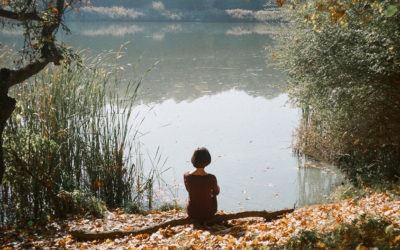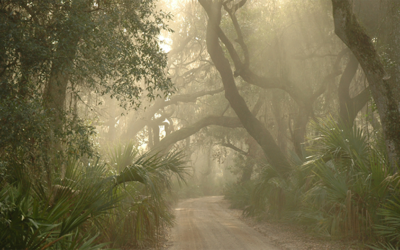“Alone with others in the wilderness.” Photo credit © Kensey Amerson.
The Increasingly Social World of Long-Distance Hiking
Communication & Education
December 2020 | Volume 26, Number 3
The quintessential image of long-distance hiking takes us back to the 19th-century naturalist, John Muir, and his solitary forays into California’s Range of Light. “Climb the mountains and get their good tidings,” Muir extolled. “Nature’s peace will flow into you as sunshine flows into trees. The winds will blow their own freshness into you, and the storms their energy, while cares will drop away from you like the leaves of Autumn” (Muir 1894). For Muir, solitary encounters with nature were not the least bit lonely (Figure 1). On the contrary, he found companionship in nature itself. “The deeper the solitude,” he wrote, “the less the sense of loneliness, and the nearer our friends” (Muir 1911).
In this article, we contrast the solitary character of Muir’s wanderings in nature with the increasingly social character of today’s long-distance hikes. Our intent is not to advocate for one kind of long-distance adventure over another but rather to raise questions about the new norms in long-distance hiking. Readers can judge for themselves how they think “John of the Mountains” would have responded to the current state of affairs.
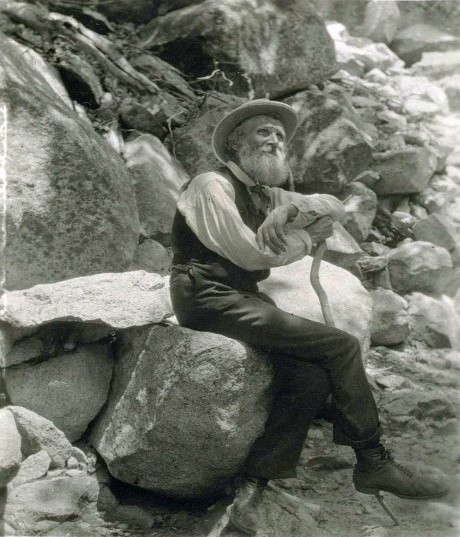
Figure 1 – John Muir, 1907. Photo courtesy of the Bancroft Library, University of California, Berkeley.
Alone with Others
Our point of departure is the first article published in the first issue of Leisure Sciences in 1977. Robert Lee, a sociologist by training, challenged conventional thinking that wildlands are places where the individual, in Muir-like fashion, “withdraws from social interaction, seeking privacy and solitude” (Lee 1977, p. 4). In his study, Lee observed that many wilderness enthusiasts welcome social interaction, and, furthermore, that social interaction does not compromise their experience of solitude. They merely see themselves as being “alone with others” (Lee, p. 3) in the wilderness (Figure 2).
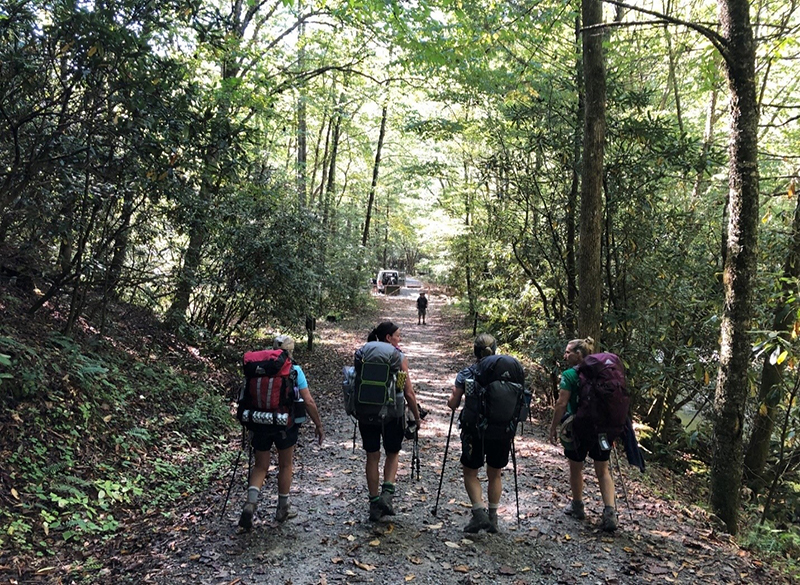
Figure 2 – “Wilderness recreation is increasingly a social experience.” Photo courtesy of Kensey Amerson.
Lee’s findings countered the prevailing notion that wildland experiences are best defined by their solitary nature, and he further cautioned that wilderness planners, policy makers, and managers should not base their decision-making on a priori assumptions regarding what people want in wildland recreation. Venturing alone into the wilderness may have befit John Muir, but it does not follow that venturing into today’s wilderness in groups, or having solitary adventurers form groups during their long-distance treks, necessarily compromise the core values for which wilderness traditionally has been managed – a sense of primitiveness and solitude. Lee’s counterintuitive conclusion prods those of us who assume wildlands are places best suited for solitary quests to revisit our assumptions. Wildland outings in the company of others may not jeopardize a feeling of solitude after all. Indeed, Lee’s findings prompt us to wonder whether exploring wildlands in groups may enhance, rather than detract from, the quality of the overall experience.
The Increasingly Social World of Long-Distance Hiking
The latest trends in long-distance hiking provide an interesting window through which to consider the ways in which growing numbers of people may differentially impact the quality of their wildland experiences (see, for example, Amerson, Rose, Lepp, and Dustin 2019; Dustin, Beck, and Rose 2017; Fondren and Brinkman 2019). An upsurge in interest in hiking the Appalachian Trail, the Pacific Crest Trail, and the Continental Divide Trail, the “Triple Crown” of the nation’s long-distance hiking trails, has been attributed to the influence of Bill Bryson’s A Walk in the Woods: Rediscovering America on the Appalachian Trail (1999), Cheryl Strayed’s Wild: From Lost to Found on the Pacific Crest Trail (2013), and well-attended movies by the same names. Indeed, the number of thru-hiking permits obtained for the Pacific Crest Trail almost quadrupled from 1,879 in 2013 to 7,313 in 2018 (PCTA 2018). Clearly, long-distance hiking is growing in popularity as attested to by a special issue of this journal devoted to long-distance trails in August 2020.
Recent academic studies focusing on the social dimensions of long-distance hiking (e.g., Goldenberg and Soule 2014; Lum, Keith, and Scott 2019) have even begun to refer to the community of long-distance hikers as “the herd.” Herds refer to waves of hikers on the nation’s long-distance hiking trails who begin their treks about the same time. Herds sometimes evolve into a “traveling community” over the course of the journey as hikers catch up to, pass, and then rejoin one another again and again.
Researchers also tell us that herds are populated by two distinct subcultures, “Purists” and “Social Hikers” (Lum et al. 2019). Purists are “motivated primarily by the actual hiking of the trail, whereas the Social Hiker is motivated primarily by social interaction with his or her fellow hikers” (Lum et al. 2019, p. 172). The Purist subculture can further be divided into Muir-like “Romantic Purists” and more practical “Utilitarian Purists,” both of whom prefer to walk alone, stay on the trail, and avoid as much as possible the need to leave the trail to resupply in nearby towns. Romantic Purists are motivated by the experiential and existential benefits associated with long-distance hiking, while Utilitarian Purists are primarily concerned with hiking every inch of the official trail from beginning to end (Lum et al. 2019).
Social Hikers can also be divided into two additional subcultures, “Gregarious Hikers” and “Party Hikers.” Gregarious Hikers are interested in forming relationships with other hikers and building a sense of community along the trail, while Party Hikers see the trail largely as a backdrop for other pursuits, including drugs and alcohol. Indeed, Party Hikers are sometimes referred to derisively by other long-distance hikers as “pub crawlers” (Lum et al. 2019, p. 176).
Long-distance hiking, in sum, not only fulfills needs for solitude, it fulfills needs for social interaction as well. This gives planners, policy makers, and managers something else to think about as they ponder the future stewardship of recreational wildlands. Is it possible, for example, that Muir-like treks focused on a quest for solitude may be harder and harder to come by in the future as more social forms of long-distance hiking gain momentum (Dustin 2018; Dustin, Beck, and Rose 2017)? Will the Romantic Purists be forced to look elsewhere to fulfill their needs? This is reminiscent of the visitor “invasion and succession” problem described so many years ago (Dustin and McAvoy 1982), when new waves of outdoor recreationists drive out old waves due to their fundamental differences in goal orientation.
At the same time, an increasingly diverse population of hikers on long-distance trails raises several new gender-related issues (Botta and Fitzgerald 2020; Howard and Goldenberg 2020). Stereotypes about what men and women are able and unable to do in the backcountry problematize wildland recreation management. Ceurvorst et al. (2018), for example, found that although women and men have similar interests in outdoor recreation, women reported more concerns about fitness, confidence, cost, and fear of getting hurt. Women also appear to be constrained by socialized gender roles in Western culture (Warren 2016; Whittington 2006), as well as being burdened by other factors, including motherhood and family obligations, financial priorities, lack of time, sexual harassment, and lack of an outdoor companion (Joyce 2016; Warren 2016). As Weatherby and Vidon (2018) conclude, “Historically, American wilderness has been conceived as a profoundly masculine landscape and a threat to femininity” (p. 332). Western notions of masculinity and femininity thus confound representations of wilderness and male and female perceived roles within wilderness.
In similar fashion, the multicultural world from which long-distance hikers come is made up of increasingly diverse views about how people should conduct themselves in the out-of-doors. A long tradition of highly educated white male wilderness enthusiasts is gradually giving way to a multiplicity of ethnically and racially diverse wilderness enthusiasts, who carry with them different ethnic, racial, and cultural heritages and different ways of viewing their relationship with the natural world (see, for example, Lugo 2019). Indeed, it is expected that by 2050, minorities will be the majority in the United States (Passel and Cohn 2008). Consequently, the nation, and its long-distance backpacking community, is bound to change dramatically in the coming years.
Long-distance hiking, then, is destined to be less and less the purview of rugged Muir-like males and more and more the purview of multiracial, multicultural, and multigendered members of a worldwide society. For these wilderness travelers, advancing down the trail in groups may simply better suit the times in which we live.
Anticipating, appreciating, and supporting the increasing multidimensionality of the motivational determinants underlying long-distance hiking is a daunting managerial challenge. Indeed “alone with others” may no longer capture the full meaning of the increasingly social world of long-distance hiking. Burgeoning smartphone use and accompanying hiking apps encourage hikers to create virtual social networks along the nation’s trails, making it possible for them to be neither “alone” nor “with others” on their wilderness sojourns (Cole and Thomsen 2020; Rogers and Leung 2020; Sutcliffe 2020). Advancing technology allows them to stay connected “with others” even when hiking “alone” (Amerson, Rose, Dustin, and Lepp 2019; Dustin, Beck, and Rose 2017).
It is no longer a matter of walking alone or with others, of experiencing solitude or not experiencing solitude, of staying on the trail or going off-trail, of finishing or not finishing the hike. Indeed, a popular refrain among long-distance hikers to “hike your own hike” illustrates the common sense of recognizing human beings for what we are – highly unique individuals with diverse motivations and aspirations. In this regard, there may be no “right” or “wrong” way to enjoy a long-distance hike. There may only be different ways. Having said that, we are still obliged to hike our own hike in a manner that reduces our collective footprint on the ground of our being (Rolston 1996). On this point, at least, Romantic Purists, Utilitarian Purists, Gregarious Hikers, and Party Hikers should all be able to agree.
The lasting benefit of the increasingly social world of long-distance hiking is the opportunity to continue building communities of support for the environments long-distance hikers pass through, much in the same way John Muir did when leading groups of Sierra Clubbers into his beloved Sierra Nevada at the turn of the 20th century (Figure 3). Researchers tell us that people who are exposed to nature take an increasing interest in protecting nature (Chawla 1998, 1988). Long-distance hikers, as well as the “trail angels” who support them (see Schwab, Goldenberg, and Dustin 2019), constitute an especially promising category of budding environmental advocates.
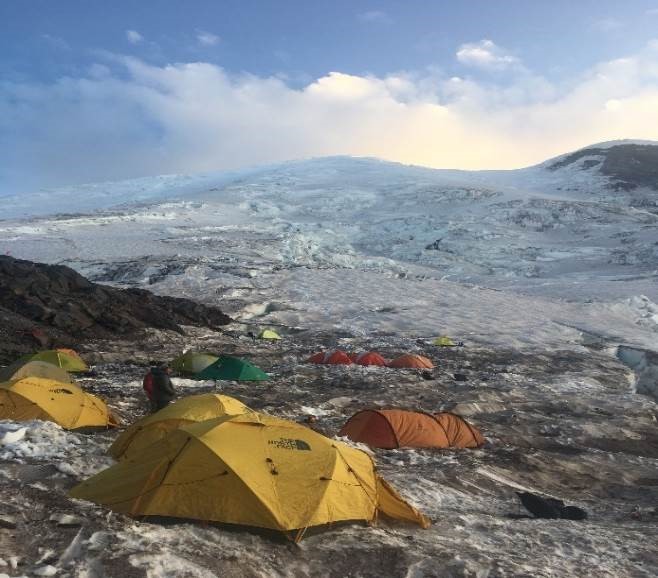
Figure 3 – “Recreating together builds community support for wilderness preservation.” Photo courtesy of Jeff Rose.
The overarching question for wilderness planners, policy makers, and managers is whether they should base their decision-making on long-accepted “inviolate” principles that equate primitiveness and solitude with solitary Muir-like saunters in nature, or whether they should amend those principles to accommodate an increasingly diverse population of wildland recreation enthusiasts (Dustin, Beck, and Rose 2018). We believe today’s managers of recreational wildlands should be tolerant of diverse forms of expression. “Different is not necessarily better or worse than the customary or traditional. It simply may be different, and when that is the case, difference should be treated with deference” (Dustin, McAvoy, and Rankin 1991, p. 26). While increasingly diverse numbers of wildland enthusiasts might tarnish the Romantic and Utilitarian Purists’ images of the “right” way to experience nature, welcoming new members into the fold is preferable to excluding them, especially at a time when recreational wildlands need all the support they can get.
John Muir may have found his community in nature’s flora and fauna, but increasing numbers of contemporary long-distance hikers are finding their community in each other. Purists may find this shift in focus disheartening, but if the enduring effect of either form of community building is a greater commitment to preserving and protecting nature, then the type of community building may not matter that much.
Conclusion
John Muir may have found his community in nature’s flora and fauna, but increasing numbers of contemporary long-distance hikers are finding their community in each other. Purists may find this shift in focus disheartening, but if the enduring effect of either form of community building is a greater commitment to preserving and protecting nature, then the type of community building may not matter that much. In this regard, when Colin Fletcher (1968), “the man who walked through time,” reflected ruefully on his solo trek through the Grand Canyon back in the 1960s with “the woods are overrun, and sons of bitches like me are half the problem,” he might just as well have added, “and half the solution.”
About the Authors
DANIEL DUSTIN is a professor in the Parks, Recreation, and Tourism Program at the University of Utah; e-mail: daniel.dustin@health.utah.edu.
JEFF ROSE is an assistant professor in the Parks, Recreation, and Tourism Program at the University of Utah; e-mail: jeff.rose@utah.edu.
KENSEY AMERSON is an outdoor leader with A Walk in the Woods Great Smoky Mountain Guiding Service in Gatlinburg, Tennessee; e-mail: bakerkensey@gmail.com.
ANDREW LEPP is a professor of recreation, park, and tourism management at Kent State University; e-mail: alepp1@kent.edu
References
Amerson, K., J. Rose, A. Lepp, A., and D. Dustin. 2019. Time on the trail, smartphone use, and
place attachment among Pacific Crest Trail thru-hikers. Journal of Leisure Research 51(3): 308-324.
Botta, R., and L. Fitzgerald. 2020. Gendered experiences in the backcountry. Journal of Outdoor Recreation, Education, and Leadership 12(1): 27–40.
Bryson, B. 1999. A Walk in the Woods: Rediscovering America on the Appalachian Trail. New York: Crown Publishing Group.
Ceurvorst, R. L., R. Fuller, D. Childers, M. Dubois, and S. Steiger. 2018. University outdoor recreation program participation: Comparing benefits, constraints, and willingness to pay between males and females. Journal of Outdoor Recreation, Education, and Leadership 10(3): 263–266. https://doi.org/10.18666/jorel-2018-v10-i3-9047.
Chawla, L. 1998. Significant life experiences revisited: A review of research on sources of environmental sensitivity. Journal of Environmental Education 29(3): 11–21.
———. 1988. Children’s concern for the natural environment. Children’s Environments Quarterly 5(3): 13–20.
Cole, T., and J. Thomsen. 2020. Understanding the role of social interactions during different phases of the thru-hiker experience. International Journal of Wilderness 26(2): 50–69.
Dustin, D. 2018. Sky pilot. In The Wilderness Within: Reflections on Leisure and Life, 5th ed. (pp. 247–256). Urbana, IL: Sagamore-Venture Publishing, LLC.
Dustin, D., L. Beck, and J. Rose. 2018. Interpreting the Wilderness Act: A question of fidelity. International Journal of Wilderness 24(1): 58–67.
———. 2017. Landscape to techscape: Metamorphosis along the Pacific Crest Trail. International Journal of Wilderness 23(1): 23–28.
Dustin, D., and L. McAvoy. 1982. The decline and fall of quality recreation opportunities and environments? Environmental Ethics 4(1): 49–57.
Dustin, D., L. McAvoy, and J. Rankin. 1991. Land ethics in a culturally diverse society. Trends 28(3): 25–27.
Fletcher, C. 1968. The Man Who Walked Through Time. New York: A. A. Knopf, Inc.
Fondren, K., and P. Brinkman. 2019. A comparison of hiking communities on the Appalachian and Pacific Crest Trails. Leisure Sciences. https://doi.org/10.1080/01490400.2019.1597789
Goldenberg, M., and K. Soule. 2014. Outcomes of hiking the Pacific Crest Trail. Journal of Outdoor Recreation, Education, and Leadership 6(1): 44–54.
Howard, I., and M. Goldenberg. 2020. Women thru-hiker experiences on the Pacific Crest Trail: Gender influences, factors of success, and personal outcomes. Journal of Outdoor Recreation, Education, and Leadership 12(1): 41–61.
Joyce, K. 2016. Out here, no one can hear you scream: The dangerous culture of male entitlement and sexual hostility hiding within America’s national parks and forests. https://highline.huffingtonpost.com/articles/en/park-rangers/.
Lee, R. 1977. Alone with others: The paradox of privacy in the wilderness. Leisure Sciences 1(1): 3–19.
Lugo, D. 2019. The Unlikely Thru-Hiker: An Appalachian Trail Journey. Boston: Appalachian Mountain Club Books.
Lum, C., S. Keith, and D. Scott. 2019. The long-distance hiking social world along the Pacific Crest Trail. Journal of Leisure Research 51(2): 165–182.
Muir, J. 1894. The Mountains of California. New York: The Century Company.
———. 1911. My First Summer in the Sierra. Boston, New York: Houghton Mifflin.
Passel, J., and D. Cohn. 2008. U.S. Population Projections: 2005–2050. Pew Research Center. https://www.pewresearch.org/wp-content/uploads/sites/5/reports/85.pdf, accessed July 24.
PCTA. 2018. Visitor use statistics. https://www.pcta.org/our-work/trail-and-land-management/pct-visitor-use-statistics/
Rogers, A., and Y. Leung. 2020. Smarter long-distance hike: How smartphones shape information use and spatial decisions on the Appalachian Trail. International Journal of Wilderness 26(2): 88–105.
Rolston, H. 1996. Nature, spirit, and landscape management. In Nature and the Human Spirit: Toward an Expanded Land Management Ethic, ed. B. Driver, D. Dustin, T. Baltic, G. Elsner, and G. Peterson (pp. 17–24). State College, PA: Venture Publishing, Inc.
Schwab, K., M. Goldenberg, and D. Dustin. 2019. Angels along the Pacific Crest Trail. Journal of Outdoor Recreation, Education, and Leadership 11(2): 89–100.
Strayed, C. 2013. Wild: From Lost to Found on the Pacific Crest Trail. New York: Vintage Books.
Sutcliffe, K. 2020. Representations of the Pacific Crest Trail on Instagram: Implications of social media for wilderness management. International Journal of Wilderness 26(1): 76–87.
Warren, K. 2016. Gender in outdoor studies. In Routledge International Handbook of Outdoor Studies, ed. B. Humberstone, H. Prince, and K. A. Henderson (pp. 360–368). New York: Routledge. https://doi.org/10.4324/9781315768465-41.
Weatherby, T., and E. Vidon. 2018. Delegitimizing wilderness as the man cave: The role of social media in female wilderness empowerment. Tourist Studies 18(3): 332–352. https:// doi.org/10.1177/1468797618771691.
Whittington, A. 2006. Challenging girls’ constructions of femininity in the outdoors. Journal of Experiential Education 28(3): 205–221. https://doi.org/10.1177/105382590602800304.
Read Next
What We Have and What We Need
As we reach the end of the 26th volume of the International Journal of Wilderness, it is worthwhile to reflect on this year that was 2020.
A Tribute to Michael Soulé
The following is a tribute to the life and contributions of Michael Soulé from several colleagues and friends.
The Preservation Paradox: How to Manage Cultural Resources in Wilderness? An Example from the National Park Service
At the same time that federal agencies must comply with protection measures of the Wilderness Act, federal cultural resource laws require agencies to take into account the effects of federal undertakings on cultural resources.

